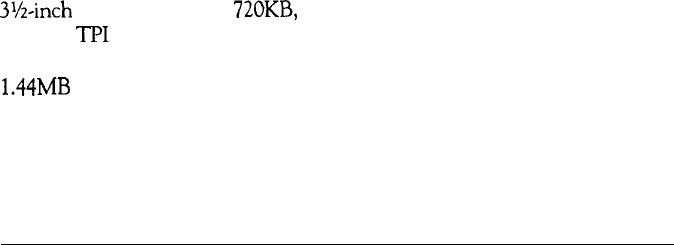
Using Diskettes
Diskette drives allow you to store data on diskettes and retrieve and use
stored data. All Equity Ie systems have at least one 720KB diskette drive;
you may also have a hard disk drive or a second diskette drive in your
system. This section explains how diskettes work and tells you how to do
the following:
l Choose diskettes
l Care for your diskettes
l
Make backup copies
l Write-protect diskettes
l
Use a single diskette drive.
How diskettes work
The diskettes you use are made of flexible plastic coated with magnetic
material and enclosed in protective plastic cases. Like a record, a diskette has
circular tracks on both sides. The computer stores the data you enter as
magnetic patterns on these circular tracks.
A small read/write head in the diskette drive interprets the magnetic
patterns. When a diskette is in a drive, the metal shutter above the access
area moves aside to expose the diskette surface to the read/write head. The
head accesses this part of the diskette when you store, retrieve, and delete
data. Because data is stored magnetically, you can retrieve it, record over it,
and erase it-just as you play, record, and erase music on cassette tapes.
Choosing diskettes for the Equity Ie
Be sure to buy high-quality diskettes to use in your Equity Ie. Choose
3%inch
diskettes that are
720KB,
soft-sectored, double-sided, double-density,
and 135 TPI (tracks per inch). Each diskette can hold 720KB of data, or
about 300 pages of text. (One kilobyte equals 1024 bytes.) Do not use
1.44MB
high-density diskettes.
3-4
Using the Equity Ie


















